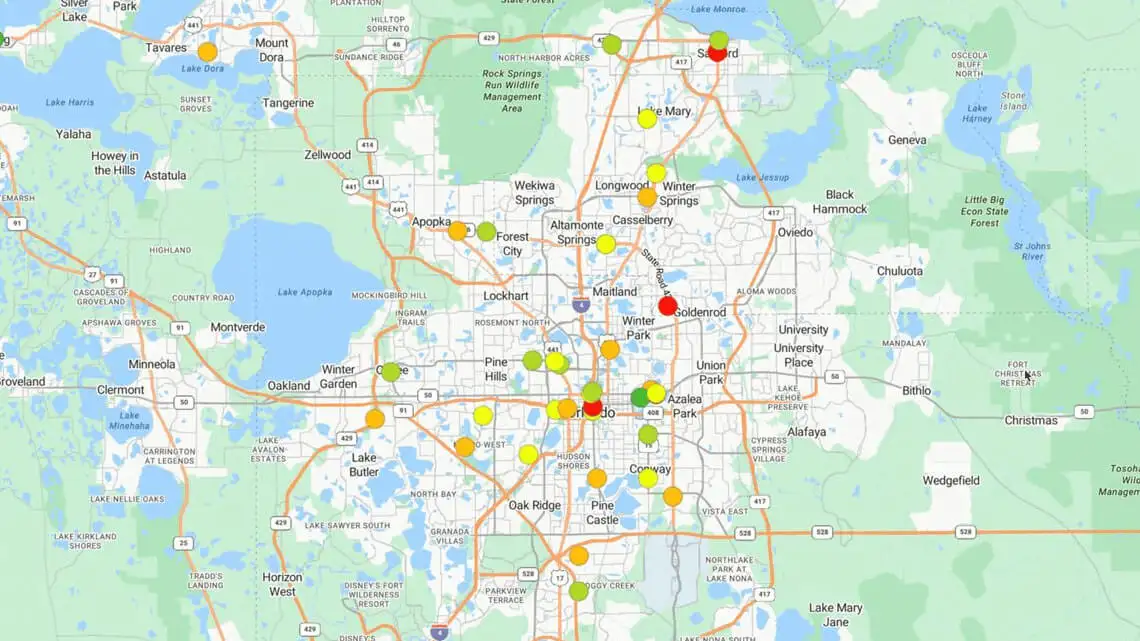Quick answer
Account mapping transforms static customer data into a visual "bird's-eye view" of relationships, needs, and opportunities.
You can't sell what you can't see. A strategic map helps reps identify key decision-makers, tailor pitches, and prioritize high-value targets.
What is Account Mapping?
Account mapping organizes and visualizes key customer data, contacts, opportunities, orders, and invoices, to create a single, holistic view of your relationships. Scattered data leads to missed expectations. By merging information from CRMs and business systems, you eliminate blind spots and align marketing, sales, and logistics.

Think of it as a drone for your sales landscape:
- The view: You get a "bird's-eye" perspective of connections that were previously hidden
- The impact: Visualization software replaces incomplete intel, shortening sales cycles and delivering the personalized experience customers demand
The Elements of an Account Map
While every map is unique, effective account mapping requires four non-negotiable components to turn data into actionable strategy.
- Centralized data: Don't rely on one source. Pull everything, CRM, billing, and email history, into a single view to capture contact details, transactions, and preferences
- Job titles: A name isn't enough. Map roles to reveal the organizational structure
- Why it helps: You stop pitching administrators and start targeting the actual technical decision-makers (e.g., the IT Director)
- Visual hierarchy: A list is not a map. You need a visual layout of reporting lines and purchasing relationships to instantly spot cross-sell opportunities
- Unique IDs: Assign a distinct numerical ID to every profile to kill duplicates
Go deeper: Add tags for industry, revenue, or lifecycle stage to filter your maps for hyper-targeted outreach.
6 Ways Mapping Drives Growth
Account mapping is more than organization, it is a competitive lever that shortens sales cycles and builds trust.
Why it matters: When you visualize the decision-making web, you stop guessing and start closing.
- Nail the first impression: Data-backed pitches prove you’ve done your homework. You don't just break the ice; you establish immediate professionalism.
- Accelerate revenue: Stop chasing bad leads. Mapping lets you prioritize high-value targets so you can increase revenue per connection.
- Uncover hidden ties: See the invisible lines between parent companies, subsidiaries, and partners to find cross-sell opportunities others miss.
- Bypass gatekeepers: Identify the actual budget holders and influencers early.
The impact: You stop pitching to the wrong room and get straight to the "yes." - Deepen loyalty: A complete view of past feedback and support cases helps you anticipate needs, turning transactional sales into long-term partnerships.
- Outsmart rivals: While competitors use generic pitches, your deep segmentation allows for bespoke solutions they can't match.
2 Ways to Map Your Accounts
You can build your map using two distinct approaches, depending on your resources and goals.
1. Individual mapping
This focuses on a single prospect to understand their specific role and influence.
- Research: Scrape company news and social media for stakeholder intel
- Interview: Ask open-ended questions to uncover specific pain points, such as budget constraints or process delays
- Map the decision: Document every player—sponsors, end users, buyers—and their specific influence on the deal
2. Partner mapping
This involves collaborating with other vendors to uncover overlapping opportunities.
- Why it matters: Alliances allow you to compare notes and find leads you can't see alone
- Align goals: Partner with vendors who share your target market to swap intel on upcoming projects
- Sync data: Use a shared CRM view (with proper permissions) to identify joint strengths
- Co-sell: Host joint events to demonstrate your combined value proposition
- Optimize: Review these alliances quarterly to ensure they track with your sales cycles
Account Mapping Best Practices
Account mapping turbocharges your pipeline, but only if you treat it as a living discipline, not a one-time task.
Why it matters: Static maps die. Follow these rules to turn lines and boxes into closed deals.
- Refresh relentlessly: Set a quarterly review cadence. An outdated map is dangerous—it points you in the wrong direction.
- Centralize intel: Don't guess. Pull data from your CRM, websites, and purchase history to build 360-degree profiles.
- Tag roles: Label every contact, buyer, champion, or blocker.
-
The goal: You need to know who signs the check and who kills the deal instantly.
- Define action: A map without a goal is just a drawing. Assign clear owners and deadlines to every target to drive accountability.
- Map the power: Visualize the actual reporting lines. This exposes internal politics and hidden influencers you'd otherwise miss.

- Automate it: Use specialized software, not static slides. You need dynamic updates and CRM integration to move at the speed of sales.
Powerful Mapping Solutions From eSpatial
CRM alone is not enough. To dominate a competitive market, you need the visual precision of eSpatial. We turn static lists into dynamic territories, revealing hidden buying behaviors, pain points, and opportunities that spreadsheets hide.
The eSpatial toolkit
- Territory management: Instantly define geographic and account-based zones to assign clear responsibilities. Learn more
- Route planning: Cut travel time and maximize face-time with buyers. Learn more
- Resource optimization: Use a territory map marker to deploy reps exactly where they are needed most. Learn more
What's next
Stop selling in the dark. Contact eSpatial to unlock your map's potential.
Frequently Asked Questions
Can I Do Account Mapping in Excel?
Yes, but it’s risky. Spreadsheets are static and age instantly. For complex accounts with multiple stakeholders, you need dynamic software to track real-time changes and reporting lines.
How Often Should I Update My Account Maps?
Quarterly is the minimum. Personnel changes happen constantly. If your map is older than 3 months, you are likely pitching to people who have moved on.
Is Account Mapping Only for Sales Teams?
No. Marketing uses it to target personas, and Customer Success uses it to identify upsell opportunities and flight risks. It is a revenue-wide asset.


